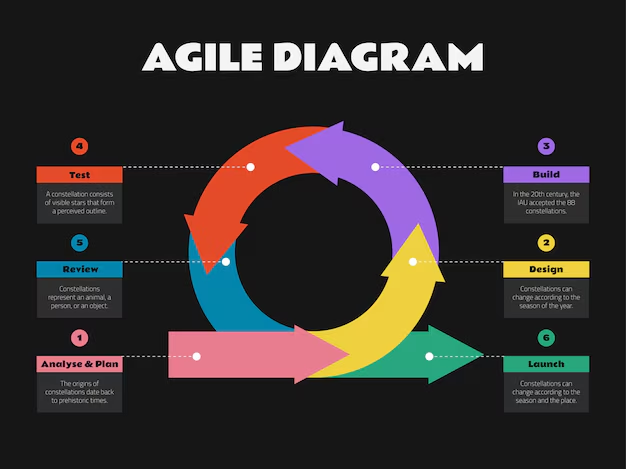In project management, success hinges on clear planning and precise execution. At the heart of every successful project lies the ability to define and organize tasks and activities effectively. Whether you're managing a software launch, planning an event, or overseeing construction, mastering these fundamentals can make or break your project. Let’s explore the art and science of breaking down projects into manageable steps for success.
Clearly defined tasks and activities form the backbone of any successful project. Defining them effectively is the first step towards achieving your goals and turning your vision into reality.
In this article, we will dive into the world of project management and explore the importance of defining tasks and activities, the benefits of creative project management, the size and organization of project tasks, and the different project management methodologies available to you. So buckle up and get ready to learn about the art and science of project management!
 What is a Task in a Project Management?
What is a Task in a Project Management?

A task in project management is a specific piece of work that contributes to the overall success of the project. It is a unit of work that has a well-defined purpose, a specific outcome, and a deadline for completion. A task can range in size and complexity, and it can take anywhere from a few minutes to several months to complete.
For example, if you're managing a construction project, a task might involve pouring concrete for the foundation. Another task might be installing electrical wiring, while yet another task might be painting the interior walls. Each task has its own unique set of requirements, resources, and timelines, and they must be carefully managed to ensure that the project is completed on time and within budget.
Importance of Tasks in Project Management
According to the PMI Pulse of the Profession report, 37% of projects fail due to poor task management. For example, in a software development project, failing to sequence tasks such as coding, testing, and deployment can lead to missed deadlines and increased costs. A well-defined task plan helps avoid these pitfalls and keeps the project on track.
A well-defined task has a clear objective, is measurable, and can be completed by a specific person or team. Effective project management involves breaking down the project into smaller, manageable tasks and then organizing and executing those tasks in a structured and efficient manner. Whether you are a seasoned project manager or just starting, understanding the importance of tasks in project management is the first step toward success.
 Task Sequencing
Task Sequencing
Task sequencing is figuring out the best order to do things. It's like when you're trying to get things done, you want to make sure you're doing them in the most efficient way possible. This can apply to a lot of different situations, like when you're managing a project, scheduling work, or even when you're putting together a to-do list for the day.
The goal of task sequencing is to make sure that you're using your time and resources most effectively. This means finding the order of tasks that will take the least amount of time or cost the least amount of money, while also making sure that all of the constraints and dependencies between tasks are taken into consideration. For example, if you're planning a big event, you might need to make sure that the decorations are set up before the guests arrive.
Task sequencing can be a complex process, and it's not always easy to determine the best order for tasks. But by using tools and techniques from fields like operations research, project management, and scheduling, you can come up with a plan that helps you get things done as quickly and efficiently as possible. Whether you're running a business, managing a team, or just trying to get through your own to-do list, task sequencing can be a valuable tool to have in your arsenal.
 What are the Benefits of Creative Project Management?
What are the Benefits of Creative Project Management?
When we think about project management, it's easy to get caught up in the traditional methods—planning, scheduling, and executing tasks with military precision. But let's be honest, not every project fits into a rigid framework. Sometimes, we need a little creativity to breathe life into our plans and tackle unexpected challenges. That's where creative project management comes in. This approach isn’t just about managing projects—it's about reimagining how we solve problems, work together, and adapt to change.
Innovation and Unique Solutions
Creative project management is an approach to project management that emphasizes creativity, innovation, and flexible thinking. This approach values new ideas and unconventional solutions and recognizes that creativity and innovation are critical components of project success. The benefits of creative project management are numerous and can help to drive the success of your project in different ways.
Collaboration and Teamwork
One of the primary benefits of creative project management is that it fosters innovation and allows you to develop unique and effective solutions to project challenges. By encouraging creative thinking and embracing new ideas, you can find innovative ways to tackle project problems and overcome obstacles. This can result in a more efficient, effective, and successful project outcome.
Flexibility in Project Execution
Another benefit of creative project management is that it promotes collaboration and teamwork. When team members are encouraged to be creative and share their ideas, it fosters a sense of ownership and engagement in the project and can lead to increased motivation and productivity.
In essence, creative project management is about more than just managing tasks—it's about fostering an environment where innovation, collaboration, and flexibility are the cornerstones of every project. By embracing this approach, we can navigate the complexities of modern projects with confidence and creativity, turning challenges into opportunities and delivering outcomes that not only meet but exceed expectations.

 What is an Activity in Project Management?
What is an Activity in Project Management?
An activity in project management is a task that needs to be accomplished to complete a project. It is a specific action that must be taken to achieve a particular result. In simple terms, an activity is a step that needs to be taken to complete a project successfully. For example, if the project is to build a house, an activity could be to lay the foundation.
Importance of Activities in Project Management
Activities are essential in project management as they provide a clear understanding of the work that needs to be done to achieve the project's objectives. They help to identify the resources required for each task and estimate the time and cost required to complete the project. Activities also help to track progress and identify any issues that may arise during the project's execution.
How Activities Work in Project Management
Activities are usually defined in a project schedule or a work breakdown structure. The project schedule outlines the sequence of activities that need to be completed to achieve the project's objectives. The work breakdown structure breaks down the project into smaller, more manageable tasks, making it easier to estimate the time and cost required for each activity.
During the execution of the project, activities are monitored and tracked to ensure they are completed on time and within budget. The project manager is responsible for overseeing the activities and ensuring that the project is progressing according to plan. If any issues arise, the project manager must take corrective action to keep the project on track.

How to Define, Plan, and Schedule Activities?
To define, plan, and schedule activities, project managers must follow a series of steps. Firstly, they need to define the project's scope and objectives. This includes identifying the deliverables that need to be produced, the timeline for the project, and the budget. Once the scope is defined, the project manager needs to break down the project into smaller, more manageable tasks. This is where the work breakdown structure (WBS) comes in.
The work breakdown structure breaks down the project into smaller tasks or activities, making it easier to estimate the time and cost required for each activity. The project manager needs to ensure that each activity is defined clearly, with a specific objective, and has a clear deliverable.
To plan and schedule activities effectively, the project manager should:
- Sequence Activities: Determine the logical order in which tasks should be completed and map out dependencies.
- Estimate Duration: Calculate the time required for each activity.
- Assign Resources: Match tasks with team members based on their skills and availability.
- Create a Project Schedule: Use tools such as Gantt charts or Kanban boards to outline the sequence and timing of activities.
After defining and scheduling activities, the project manager needs to monitor and track the progress of the project. They should regularly review the project schedule to ensure it aligns with the plan. If any issues arise, corrective actions should be taken to keep the project on track.
Examples of Activities in Project Management
Activities in project management can vary depending on the nature and scope of the project. However, some common examples of activities that are typically used in project management include:
Planning
This activity involves defining the project's scope, objectives, and goals. It also involves creating a project plan, outlining the tasks that need to be completed, and the resources required.
Design
This activity involves creating the project design or blueprint. It involves identifying the materials and resources required, creating a detailed plan for the work, and designing the final product or service.
Execution
This activity involves implementing the project plan. It includes assigning tasks to team members, overseeing the work, and managing any issues that arise.

Monitoring and Controlling
This activity involves monitoring the project's progress, comparing it against the project plan, and making adjustments as needed. It also involves identifying any potential issues or risks and implementing corrective action to keep the project on track.
Closing
This activity involves closing out the project, including finalizing any remaining tasks, evaluating the project's success, and documenting any lessons learned.
In addition to the above activities, other examples of activities in project management include procurement, quality assurance, risk management, stakeholder management, and communication management.
 Defining Tasks and Activities in Project Management: The Art and Science of Effective Project Planning
Defining Tasks and Activities in Project Management: The Art and Science of Effective Project Planning

Projects can be overwhelming if you look at them as a whole. Think of them as a giant puzzle; the only way to complete it is by focusing on one piece at a time. Breaking down projects into smaller, manageable components not only makes them less daunting but also allows for better planning, resource allocation, and monitoring. Each task and activity becomes a stepping stone toward the final goal, making the entire process more organized and efficient.
Step 1 - Identify Project Requirements
Before diving headfirst into the project, let's take a moment to pause and reflect. What are the goals you want to achieve? Who are your stakeholders? By identifying your project requirements, you create a solid foundation for success. To get started, we recommend:
- Conducting a thorough stakeholder analysis.
- Creating a project charter to outline your objectives, scope, and stakeholders.
- Developing a requirements document to specify your project's needs and expectations.
Step 2 - Break Down the Project into Tasks
Now that you've got a clear vision, it's time to break the project down into manageable tasks. Just as a sculptor chisels away at a block of marble, you'll break your project into smaller pieces, gradually revealing its true form. To do this effectively, try using the Work Breakdown Structure (WBS) technique, which allows you to:
- Organize tasks hierarchically.
- Estimate the effort required for each task.
- Identify dependencies and potential bottlenecks.
Step 3 - Assign Resources
You've got your tasks lined up; now it's time to find the right people for the job. Think of your resources as the tools in your toolbox: you wouldn't use a hammer to screw in a nail, would you? To optimize your resource allocation, consider:
- Assessing the skills and availability of your team members.
- Estimating the time and effort required for each task.
- Matching tasks to the most suitable resources.
Step 4 - Set Timelines
Time waits for no one, so let's make sure your project doesn't fall behind schedule. By setting realistic timelines, you'll keep your project on track and maintain momentum. To help you with this process, create a Gantt chart to:
- Visualize your project's timeline.
- Monitor progress and deadlines.
- Adjust your schedule as needed.
Step 5 - Monitor Progress
Projects are living, breathing entities, constantly evolving as they progress. To ensure your project stays on course, it's crucial to monitor its progress, adapting and adjusting as necessary.
- Review task completion and deadlines.
- Communicate with team members to identify any issues.
- Update your project plan to reflect current progress.
Step 6 - Complete the Project
Congratulations! You've navigated the winding path of project management and reached the finish line. But before you pop the champagne, take a moment to tie up any loose ends and ensure a smooth transition. As you wrap up, don't forget to:
- Conduct a final review of deliverables.
- Obtain stakeholder approval and sign-off.
- Hold a project debrief to discuss lessons learned and celebrate your team's success.
 What Size Should a Project Task Be?
What Size Should a Project Task Be?
The size of a project task depends on several factors, including the complexity of the task, the available resources, and the skills of the team members. Project tasks can be divided into smaller, more manageable tasks, or they can be combined into larger tasks to maximize efficiency and minimize redundancies. There are three options for task sizing:
Microtasks

Microtasks are small, simple tasks that can be completed quickly. They are ideal for repetitive or straightforward tasks, and they help to break down large projects into manageable units of work.
For example, if you are managing a software development project, a microtask might involve fixing a bug in the code, or updating a user interface element. These tasks are small, well-defined, and can be completed quickly and efficiently.
Mid-Size Tasks

Mid-size tasks are larger than microtasks but smaller than full-scale projects. They are ideal for projects that require a moderate level of complexity and effort.
For example, imagine you are managing a renovation project for a home. A mid-size task could involve installing new flooring or painting a room. These tasks are big enough to require some planning and coordination, but not so big that they take weeks or months to complete.
Full-Scale Projects

Full-scale projects are complex, multi-faceted tasks that require significant resources and effort. They are ideal for projects that require specialized skills or that have a long duration.
For example, let’s say you are managing the construction of a new building. A full-scale project could involve overseeing the entire construction process from start to finish, including tasks such as site preparation, foundation work, and finishing work. These tasks are big, and complex, and require a lot of planning and coordination to ensure that they are completed on time and within budget.
 How to organize project tasks
How to organize project tasks
Organizing project tasks is a crucial part of project management. It involves breaking down the project into smaller, manageable tasks and then putting them into a logical order that makes sense for the project. There are several methods for organizing project tasks, including Agile, Lean, Waterfall, and Scrum.
Let's take a closer look at each of these methods:
Agile
Agile is all about being flexible and adaptable. You break your project down into smaller, manageable chunks called "sprints," and then prioritize tasks based on what's important and feasible. The idea is to work closely with your team and make changes as needed, so you can keep improving and delivering value along the way. For example, if you're developing a new app, you might start with a basic version, get feedback from users, and then keep adding new features in each sprint.

Lean
Lean is all about getting rid of waste and maximizing efficiency. You visualize your workflow using tools like Kanban boards and then look for ways to streamline the process and eliminate bottlenecks. For example, if you're launching a new product, you might use Lean to figure out the most efficient way to get it from the factory to the customer, without any unnecessary steps in between.
Waterfall
Waterfall is a step-by-step approach to project management. You divide your project into distinct phases, each with a specific outcome and deliverable. You complete one phase before moving on to the next, and you don't usually go back and make changes once a phase is done. For example, if you're building a new house, you might use Waterfall to make sure you've finished the foundation and framing before you start on the electrical work.
Scrum
Scrum is a type of Agile framework, but it has its own set of rules and practices. Like Agile, you work in sprints, but with Scrum, you have daily stand-up meetings and regular reviews to make sure you're on track. The goal is to stay nimble, keep the team informed, and make progress quickly. For example, if you're developing a new website, you might use Scrum to make sure everyone is on the same page, get feedback from stakeholders, and keep making improvements along the way.
 Common Pitfalls in Task and Activity Management
Common Pitfalls in Task and Activity Management
Even with the best planning, projects can still encounter bumps in the road. Understanding common pitfalls in task and activity management can help you avoid them and keep your project on the path to success. Let’s explore some of these common challenges and how to navigate around them.
Overlooking Task Dependencies
One of the most common mistakes in project management is overlooking task dependencies. Picture this: You’re halfway through your project, and suddenly you realize that Task B can't start because Task A isn’t completed yet. This oversight can lead to delays, resource conflicts, and frustration among team members.
How to Avoid This Pitfall:
- Map Dependencies Early: During the planning phase, use tools like Gantt charts or dependency matrices to visualize task relationships.
- Example: In construction projects, ensure site preparation is completed before starting the building phase.
- Regularly Review: Update and reassess dependencies as the project progresses to ensure they remain accurate and aligned with the plan.

Misallocating Resources
Misallocating resources is like trying to build a house without the right tools—it’s going to be slow, frustrating, and possibly result in a structure that’s less than sturdy. This pitfall often occurs when tasks are assigned without considering the skills, availability, or workload of team members.
How to Avoid This Pitfall:
- Understand Team Capacity: Assess your team's strengths, expertise, and current workload before assigning tasks.
- Use Resource Management Tools: Platforms like Trello or Edworking can help you visualize workloads and ensure fair task distribution.
- Example: Avoid assigning multiple high-priority tasks to one person while others have lighter workloads. Proper allocation improves efficiency and morale.
Inadequate Monitoring and Adjustments
Imagine setting sail on a long journey but never checking your course—before you know it, you’re way off track. The same can happen in projects if there's inadequate monitoring and no adjustments are made along the way. Without regular check-ins and progress assessments, small issues can snowball into major setbacks.
How to Avoid This Pitfall:
- Conduct Regular Check-Ins: Schedule weekly stand-ups or status meetings to discuss progress, challenges, and solutions.
- Track Performance Metrics: Use tools like Earned Value Management (EVM) to compare planned progress with actual achievements.
- Example: If a milestone is delayed, use the meeting to reassign resources or adjust the schedule before the delay worsens.
Failure to Adapt to Project Changes
In the fast-paced world of project management, change is the only constant. Whether it's a shift in client requirements, unexpected technical challenges, or resource constraints, the ability to adapt is crucial. However, many projects falter because they fail to adapt to these changes, leading to delays, cost overruns, or even project failure.
How to Avoid This Pitfall:
- Cultivate Flexibility: Foster a team culture that embraces change and remains open to adjustments.
- Use Change Management Strategies: Assess the impact of changes systematically and integrate them into the project plan without disrupting progress.
- Communicate Clearly: Keep stakeholders informed about changes to align expectations.
- Example: If a client requests a feature change mid-project, evaluate its feasibility and adjust timelines and resources as needed to accommodate it.
 Integrating Edworking
Integrating Edworking

Leveraging Edworking for Effective Task and Activity Management
In today’s fast-paced, remote work environment, managing tasks and activities effectively requires the right tools. Edworking offers a powerful solution that integrates seamlessly into your project management processes, enhancing collaboration and efficiency across teams.
Streamlining Task Management
With Edworking, you can break down your project into manageable tasks, assign them to the right team members, and monitor progress in real-time. The platform’s intuitive interface allows you to organize tasks, set priorities, and track dependencies, ensuring that your project stays on course.
For example, when dealing with complex projects that require multiple teams to work together, Edworking’s task management features make it easy to see who is working on what, reducing the chances of overlap or missed deadlines. This is especially important in large-scale projects where the margin for error is slim.
Enhancing Team Collaboration
Effective project management relies heavily on strong communication and collaboration. Edworking brings your team together in a virtual workspace where ideas can be shared, feedback can be given, and decisions can be made quickly. Its integrated communication tools, including chat and video conferencing, make it easy to keep everyone on the same page, no matter where they are located.
For instance, during the planning phase of a project, team members can brainstorm ideas directly within Edworking, using its collaborative features to develop innovative solutions to project challenges. This level of interaction fosters a more dynamic and engaged team environment.
Real-Time Adaptation to Project Changes
One of the standout features of Edworking is its ability to help teams adapt to changes in real-time. Whether it’s a sudden shift in project scope or a reallocation of resources, Edworking’s flexible platform allows you to make adjustments quickly and efficiently, ensuring that your project remains aligned with its goals.
In a scenario where a client requests changes late in the project, Edworking enables project managers to update timelines, reassign tasks, and communicate these changes to the team instantly. This ability to adapt on the fly is crucial for maintaining momentum and delivering successful outcomes.
 Real-World Examples: Putting Task and Activity Management into Practice
Real-World Examples: Putting Task and Activity Management into Practice
Understanding project management theory is one thing—but seeing it in action is where the real learning happens. Let's look at how task and activity management shows up in real-world scenarios across different industries.
Software Development
In an agile software team, defining tasks might include writing a new feature, fixing bugs, or conducting code reviews. Each activity, like sprint planning or backlog grooming, supports these tasks by aligning the team and refining priorities.
Event Planning
Imagine planning a corporate conference. Tasks include booking the venue, securing speakers, and managing registrations. Supporting activities? Weekly check-ins, client approvals, and contingency planning in case of last-minute changes.
Marketing Campaigns
A digital marketing team launching a new product might divide the project into tasks such as content creation, ad setup, and email blasts. Activities like brainstorming sessions, campaign audits, and performance reviews help guide the execution.
These examples highlight a critical truth: the main difference between tasks and activities lies in their function—tasks are the “what,” and activities are the “how.” Understanding this distinction and applying it effectively helps teams move from strategy to execution with confidence and clarity.
 Conclusion
Conclusion
In conclusion, effective task and activity management is the cornerstone of successful project execution. By breaking down projects into clear, actionable steps, allocating resources efficiently, and leveraging tools like Edworking, you can ensure your team stays on track and achieves outstanding results. With the right tools and techniques, project managers can simplify the process of defining tasks and activities, leading to a more efficient and effective project outcome.
If you need an efficient collaboration platform to keep your team organized and connected, Edworking is the answer. It offers powerful features, and the best part is that it's free to use for an unlimited time. Take the first step today—streamline your processes and elevate your projects with Edworking. Try it out and see how it can help your team become more productive and simplify their work processes.







